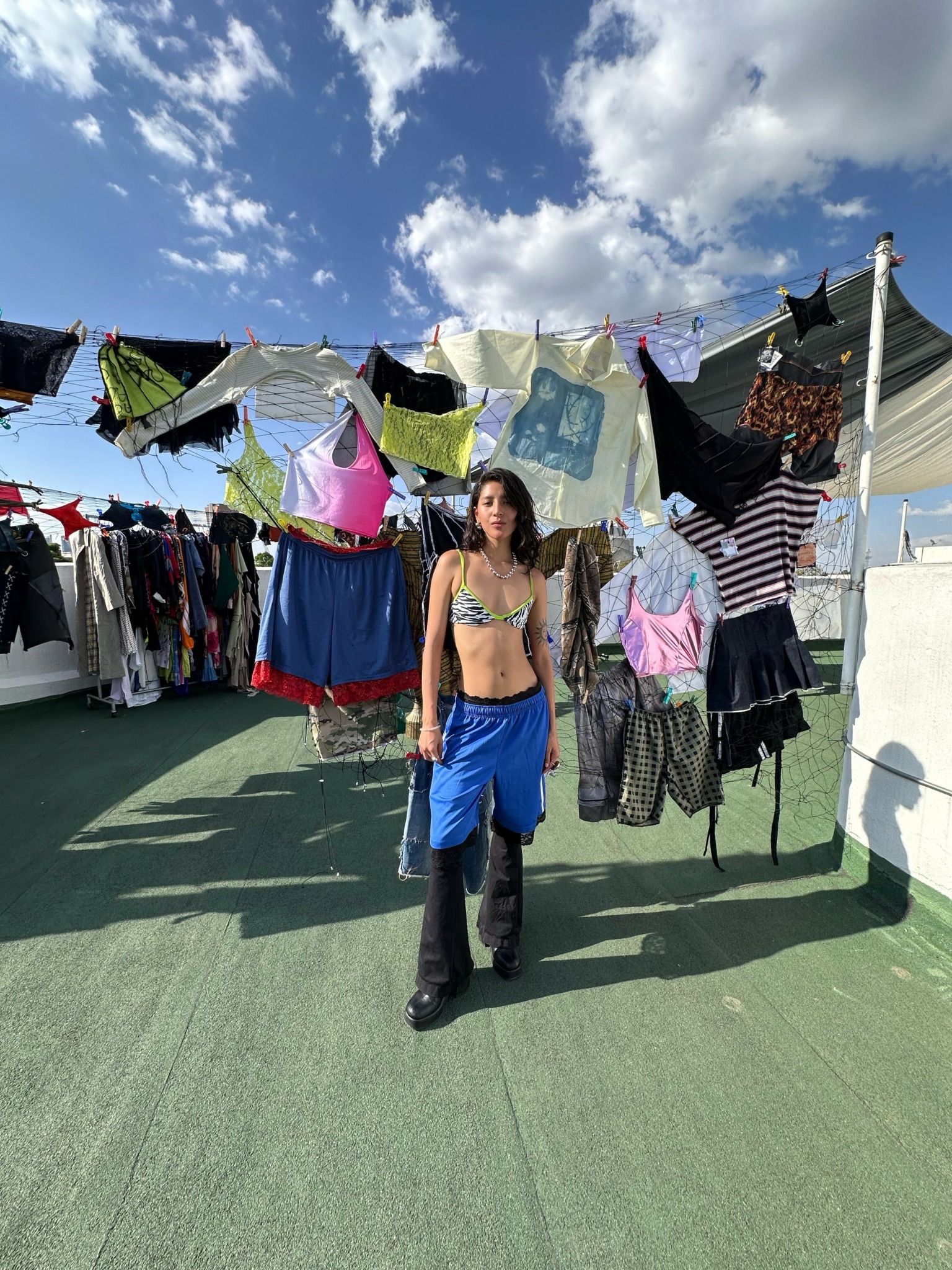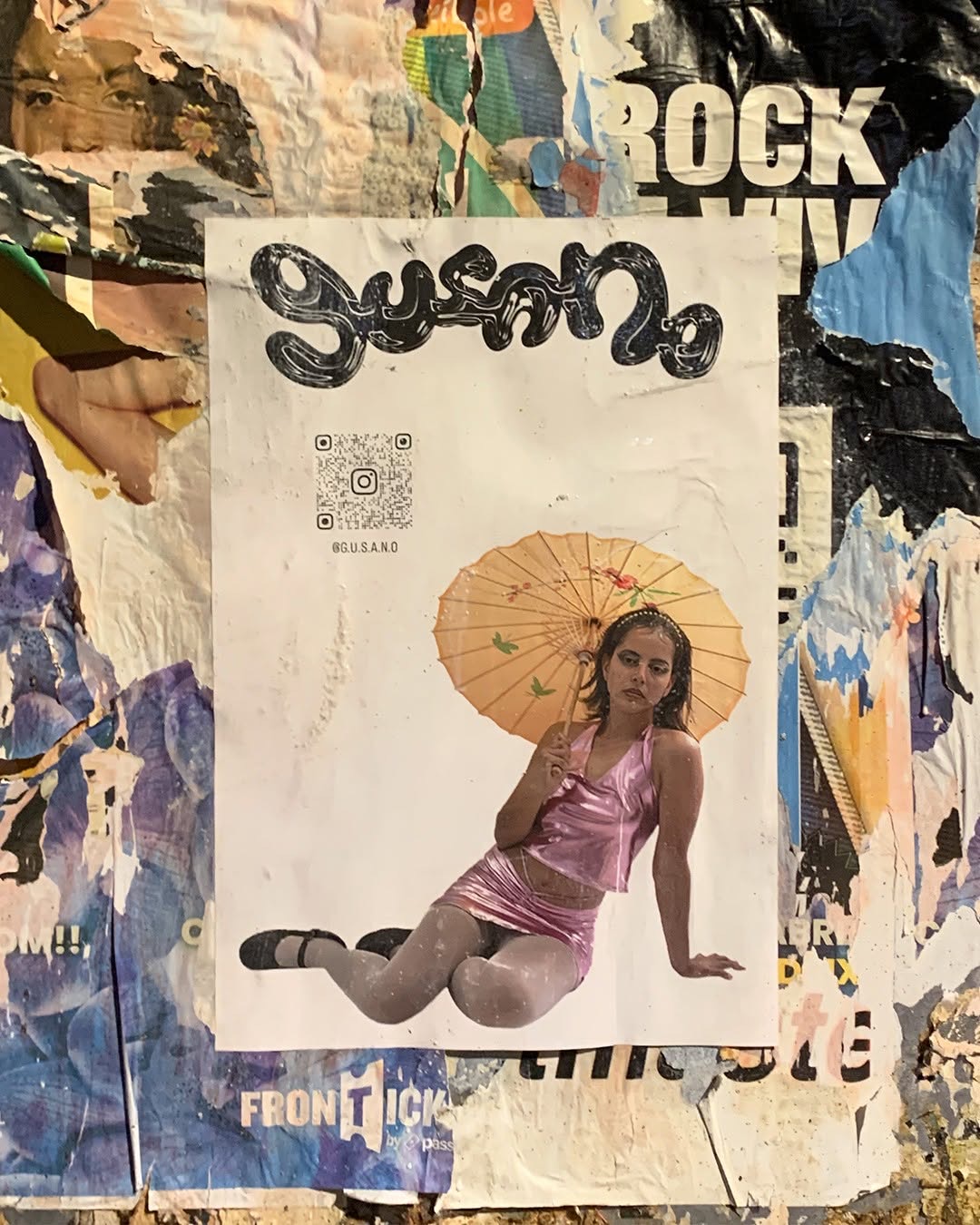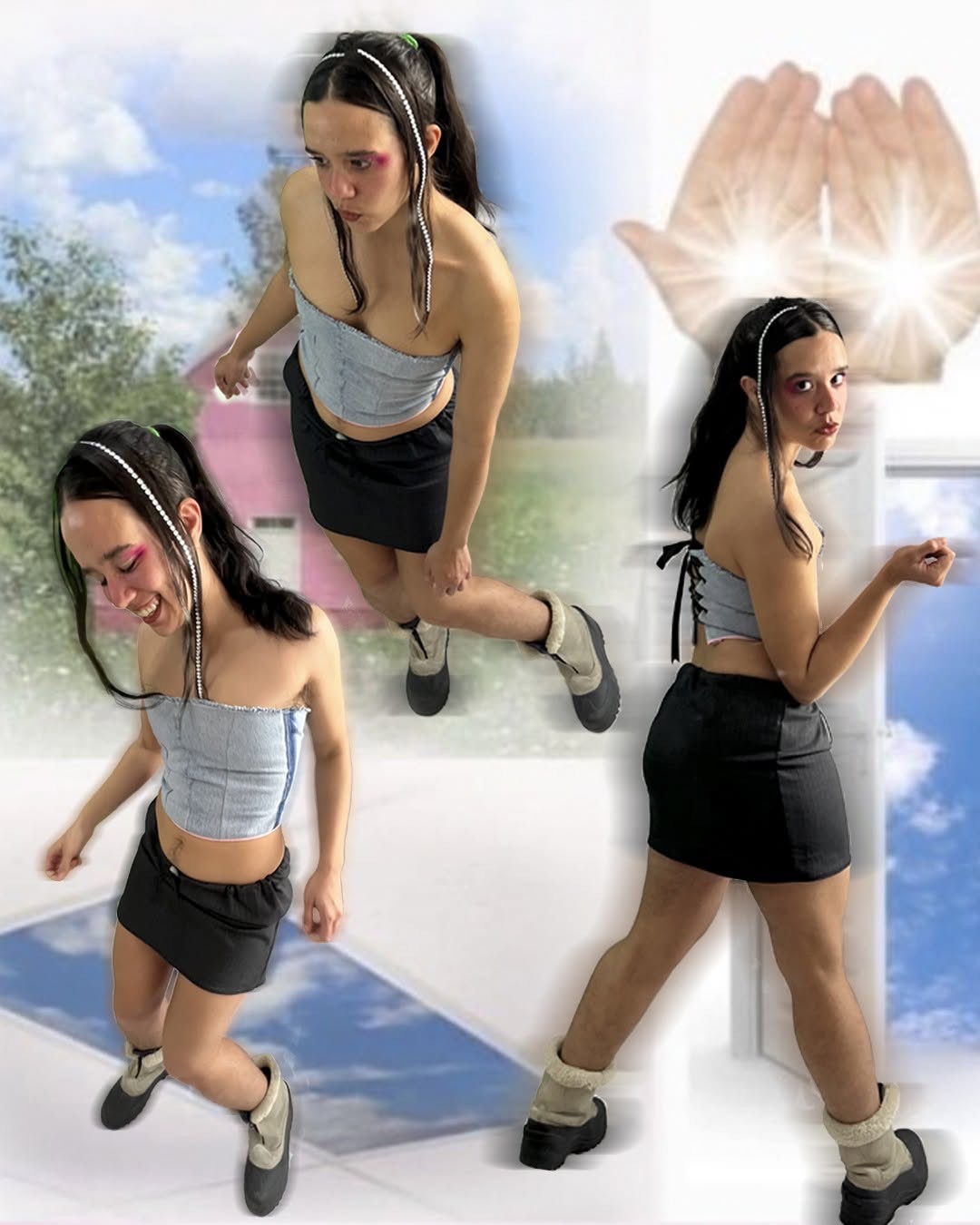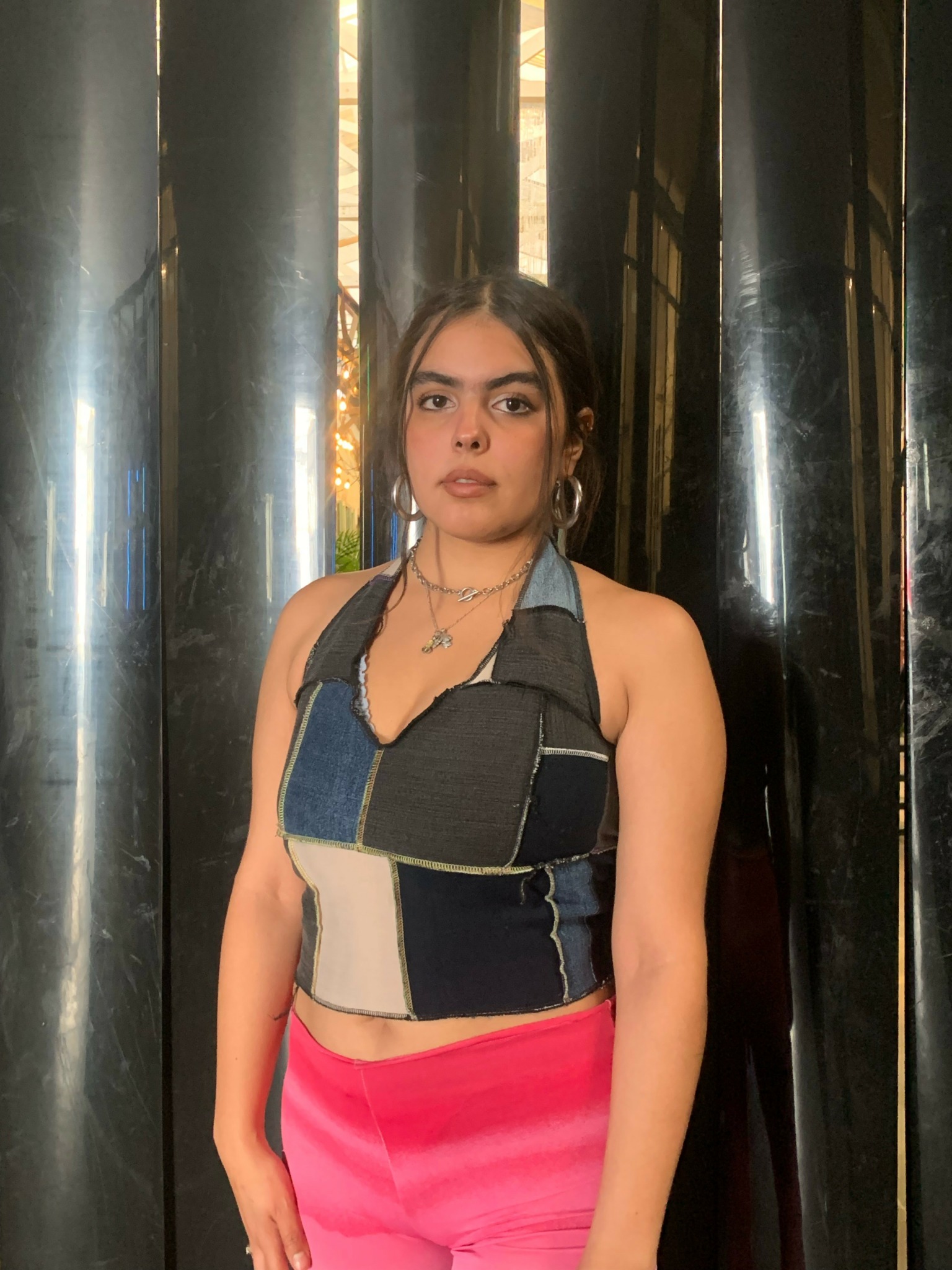We’re excited to introduce you to the always interesting and insightful Renée Laniado Cabrales. We hope you’ll enjoy our conversation with Renée below.
Renée, thanks for taking the time to share your stories with us today How did you learn to do what you do? Knowing what you know now, what could you have done to speed up your learning process? What skills do you think were most essential? What obstacles stood in the way of learning more?
How did you learn to do what you do?
Although I made my bachelor in philosophy, I’ve always been drawn to arts and creativity; so, even though my formal education is more theoretical oriented, I began diving myself into projects that sparked my interest. First with video making, learning how to use a camera and editing software with help from my sisters and friends in film school. I started experimenting with visual storytelling by turning my academic essays into what I called “visual poetry”—expressing philosophical ideas through images and sound, using minimal text. That exploration led me into graphic design and eventually into fashion, where I created my brand, gusano. But again, I had no formal training in fashion design, I didn’t even know how to turn on a sewing machine, so I once more sought help from friends, hiring one of them for sewing basics lessons 101, and from then on, I’ve learned everything else through the internet and the experience from trial-and-error.
Knowing what you know now, what could you have done to speed up your learning process?
I would have trusted my creative instincts earlier and allowed myself to experiment without waiting to feel “ready.” You don’t need every material or to have all the equipment to start creating, use what you have in hand at the moment, you’ll be able to acquire your tools and develop your skills in the process. I might have also leaned into collaboration sooner—talking to more people, asking more questions, and not being afraid to ask for help. I remember being stuck on something, say for example, how to use bias tape on my designs. Trying to learn how to do so just by seeing videos on the internet can be really confusing, but once I asked my friend how to do it, she thought me with ease and in less than an hour I had finished my whole design using my new learned skill.
What skills do you think were most essential?
First of all patience, be kind to yourself!!! Curiosity, adaptability, and the willingness to be uncomfortable in the learning process were essential. Communication and storytelling helped connect all my creative endeavors, whether in video, design, or fashion. Self-discipline and resourcefulness also played a big role in turning ideas into real projects.
What obstacles stood in the way of learning more?
A lack of formal training sometimes made me doubt myself or feel behind. I also struggled with perfectionism and the fear that what I created wouldn’t be good enough. Access to resources—like equipment or funding—was a barrier at times, but I learned to be creative with what I had.

Great, appreciate you sharing that with us. Before we ask you to share more of your insights, can you take a moment to introduce yourself and how you got to where you are today to our readers.
My name is Renée Laniado Cabrales, and I’m the creator of gusano, a fashion brand born from a deep impulse to create, transform, and rethink how we interact with clothing and design. My background is in philosophy and academia, but my heart has always belonged to the arts and creativity. What began as a personal dive into video and visual storytelling eventually led me to fashion and design—an unexpected but deeply intuitive path where I could combine ideas, aesthetics, and action.
Gusano—Spanish for “worm”—is both a brand and a metaphor. It reflects growth, metamorphosis, and a raw, grounded approach to creativity. (I also just happen to like how the word sounds) At its core, gusano is a response to overconsumption and waste in the fashion industry. One of my main practices is collecting discarded garments from flea markets—pieces that are torn, stained, or simply deemed “out of style”—and transforming them into new pieces that people will once again fall in love with and wear on their very own special occasions or in their everyday lives. I also source deadstock fabrics from neighborhoods in downtown Mexico City, materials that would otherwise likely end up in landfills. Every piece I make is built from what’s been left behind—revived, reimagined, reworked, and made to be cherished again.
My aesthetic is deeply influenced by the punk ethos I grew up with—DIY, anti-establishment, rough around the edges but full of intent. That influence permeates not just how my brand looks, but how it operates. I learned to sew by necessity, with the help of friends and online resources, and I continue to work in that spirit of self-education and community. Gusano follows transformation—personal, material, and cultural.
What sets gusano apart is this convergence of philosophy, sustainability, and punk — its authenticity and rawness. It’s about reclaiming what’s been discarded and giving it new meaning. My work invites people to slow down, reflect, and choose garments that feel alive—pieces with history, texture, and purpose. I want people to wear my designs not just because they look good, but because they say something—about who they are, what they believe, and how they move through the world. I’m building a world that feels honest to who I am, and I invite others to see themselves in it, too. The brand is deeply DIY, experimental, and rooted in care. Every piece holds a story,
Gusano is more than a clothing line. It’s a narrative of becoming—of turning ideas into form, of embracing change, and of honoring the weird, tender, and imperfect parts of ourselves. I design pieces that invite people to connect with their own process of transformation. The clothes are handmade, often one-of-a-kind, and each collection reflects a moment in my personal and creative development.
What I’m most proud of is that I’ve built gusano without formal training, just through persistence, curiosity, and a belief in the value of doing things differently. If you’re discovering gusano for the first time, know that it’s a brand rooted in transformation—from the materials I use to the people I create for. It’s handmade, intentional, and unapologetically personal. I didn’t wait for permission or credentials to begin. I started with curiosity and kept moving forward, even when I didn’t know where it would lead. My goal now is to continue creating from that place—and to offer pieces and ideas that encourage others to do the same.
Gusano is an invitation: to wear something meaningful, to explore your own transformation, and to connect with creativity as a form of growth.

What’s the most rewarding aspect of being a creative in your experience?
For me, the most rewarding aspect of being an artist or creative is the ability to transform personal ideas, emotions, or values into something that others can connect with—something that lives outside of me and takes on new meaning in someone else’s life. There’s something deeply fulfilling about taking raw thoughts or discarded materials and turning them into a form that resonates, moves, or inspires.
It’s also about freedom: the freedom to explore, experiment, and build a world on my own terms. And when someone tells me that a piece I made made them feel something—or made them see themselves differently—that’s when it all feels worth it. Seeing people live in the things I make. There’s something incredibly special about being at a concert or a party and spotting someone wearing a piece from my brand. Or when a friend asks me to design something for their birthday—it’s such an honor. It means that what I create speaks to them on a personal level, that it makes them feel confident, safe, and cool. That feeling—that my work can become part of someone’s meaningful moments—is honestly the best part of all this.

Learning and unlearning are both critical parts of growth – can you share a story of a time when you had to unlearn a lesson?
One of the biggest lessons I had to unlearn was the idea that I needed formal training or permission to start creating seriously. Coming from a philosophy background, I initially felt like an outsider in the creative world—especially in fashion. I thought I had to study design, take certain courses, or follow a specific path before I could call myself a designer or share my work publicly. But that mindset held me back.
The turning point came when I had ideas I just had to bring to life. I didn’t want to wait for the “right” moment or validation anymore. I realized that curiosity, commitment, and a willingness to learn by doing were just as powerful as any official training. Unlearning that need for external validation gave me the freedom to grow on my own terms, and ultimately, it allowed my brand to exist at all.
Even today, I’m still learning—but that doesn’t take away from the value of my work. Practice, patience, and being kind to yourself are key. I had to let go of the fear of what others might think and just start creating from a genuine place. That mindset shift allowed me to grow, to take risks, and to build gusano in a way that’s honest and true to me. I also had to unlearn the belief that there’s a “perfect” way of doing things. There isn’t. I had to trust that my way—how I learn, how I work, how I create—is valid. That mindset helped me not only grow creatively but also begin to value my work enough to put it out into the world and earn from it.
I’m not yet fully living off my creative work, but I’ve gotten to a place where it helps sustain me—and that’s something I’m really proud of. Hopefully, in time, I’ll be able to dedicate myself entirely to it. But for now, I’m just grateful that something that started as a personal impulse has become something I can share, build on, and grow with.
Contact Info:
- Instagram: @g.u.s.a.n.o




Image Credits
Photos by: Tanya García, Alan Román, Renée Laniado
Models: Miri, Salma Jillian, Gurrumata, Valeria Martínez, Ivana Xiqui, Ximena Munguía


